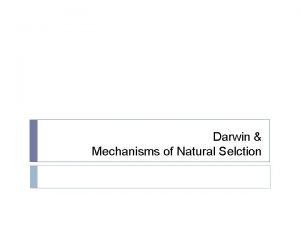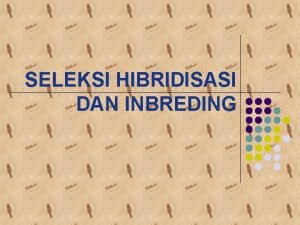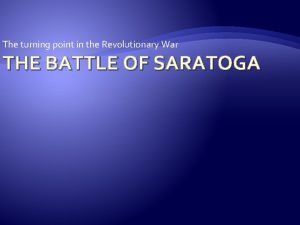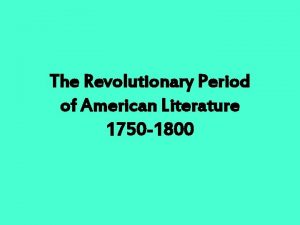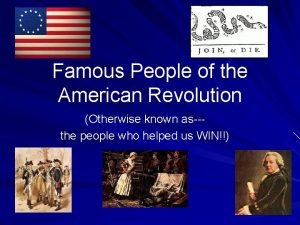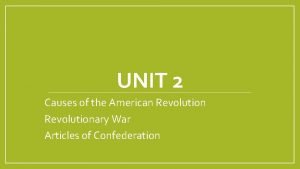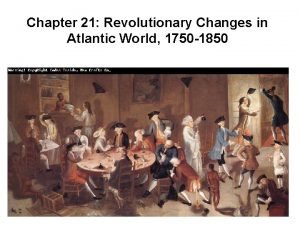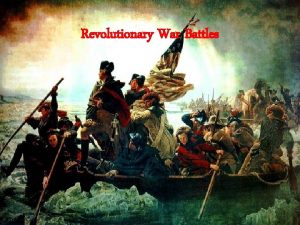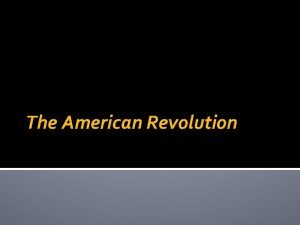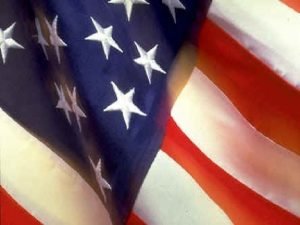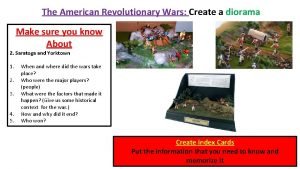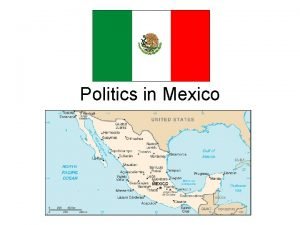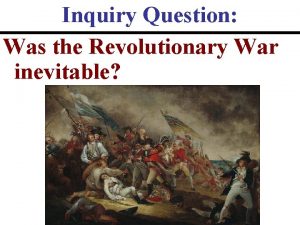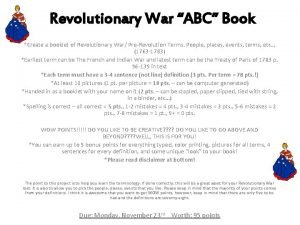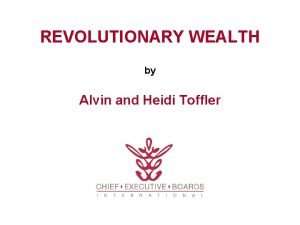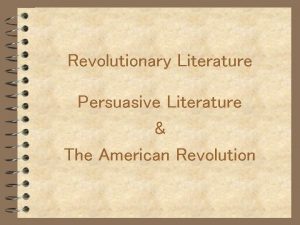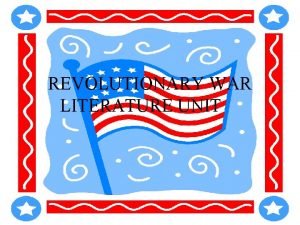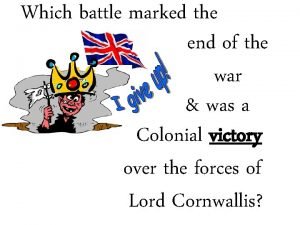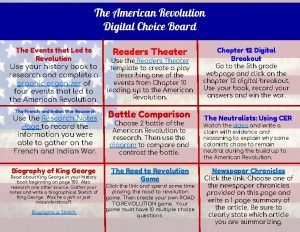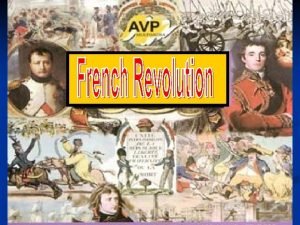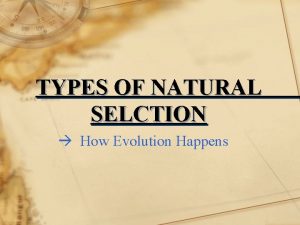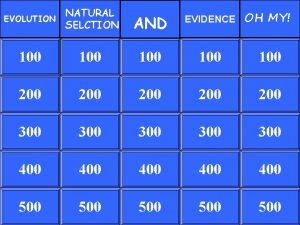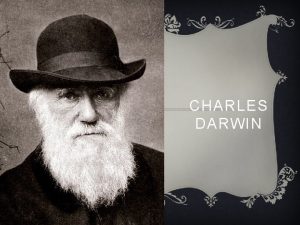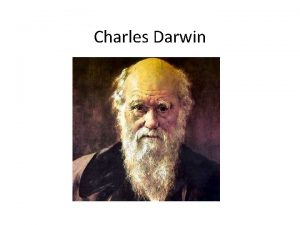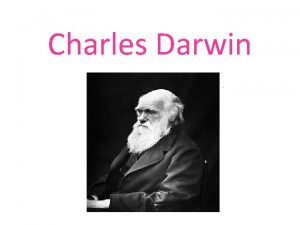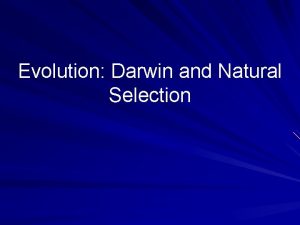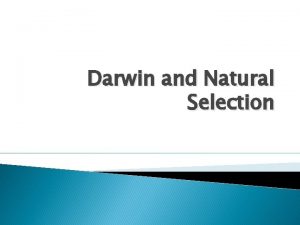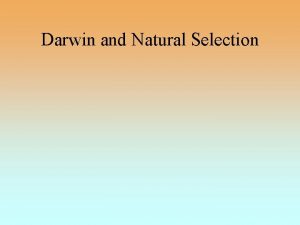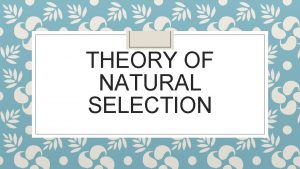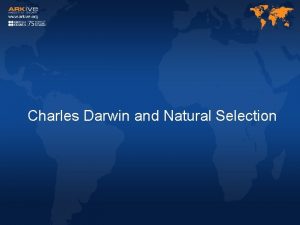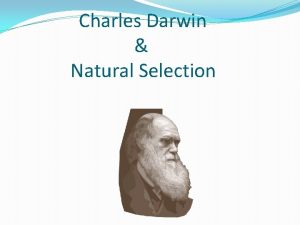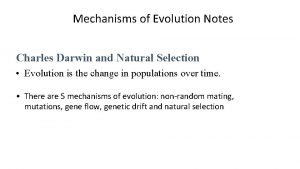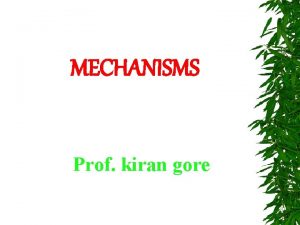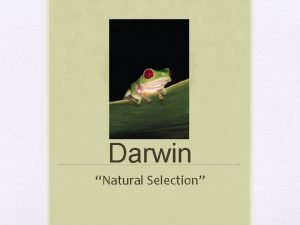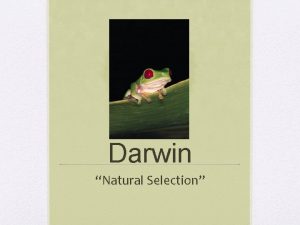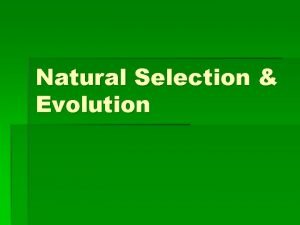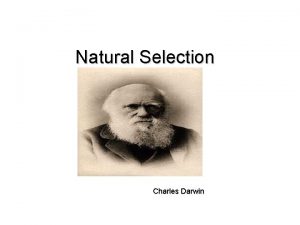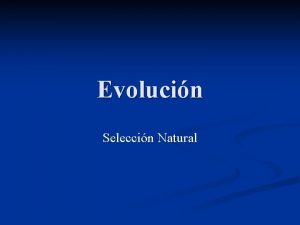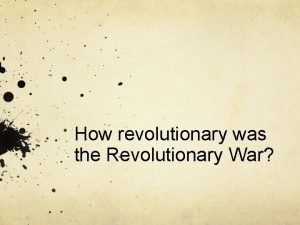Darwin Mechanisms of Natural Selction A Reluctant Revolutionary



























- Slides: 27

Darwin & Mechanisms of Natural Selction

A Reluctant Revolutionary � Returned to England in 1836 � Wrote papers describing his collections & observations � Brought back thousands of specimens and fossils � Draft of his theory of species formation in 1844 � Concerned about the impact of his ideas in a religious culture � instructed his wife to publish this essay upon his death � reluctant to publish but didn’t want ideas to die with him

And then came the letter…. Then, in 1858, Darwin received a letter that changed everything… � Alfred Russel Wallace A young naturalist working in the East Indies, had written a short paper with a new idea. He asked Darwin to evaluate his ideas and pass it along for publication. � Uhoh Darwin, you better hurry up!!

Voyage: 1831 -1836 November 24, 1859, Darwin published “On the Origin of Species by Means of Natural Selection”

Essence of Darwin’s ideas (1) Variation exists in natural populations (2) Many more offspring are born each season than can possibly survive to maturity (3) As a result, there is a struggle for existence - competition (4) Characteristics beneficial in the struggle for existence will tend to become more common in the population, changing the average characteristics of the population - adaptations (5) Over long periods of time, and given a steady input of new variation into a population, these processes lead to the emergence of new species

Darwin’s Theory of Evolution by Natural Selection Observation 1. 2. 3. 4. Individuals within a species vary in many ways Some variability can be inherited Each generation produces way more offspring than can survive and passes on variations Populations tend to remain stable in size

Darwin’s Theory of Evolution by Natural Selection Inferences 1. 2. 3. Members of the same species compete with each other for survival Individuals with more favourable variation are more likely to survive. SURVIVAL IS NOT RANDOM Survivors contribute proportionately more offspring to succeeding generations the favourable variation will become more common THIS IS NATURAL SELECTION

Why people didn’t believe it: �Not everyone thought the earth was millions of years old �Fossil record had HUGE gaps (geology and palaeontology are new sciences) �Fossil record did not show transitional forms �Didn’t know about genetics (believed in blending in traits, so how could new structures appear from nothing? )

Today �Life on earth has been dated at 3. 5 billion years �Far more fossils found which show progression (ex. 50 million year old whale ancestor with big hind limbs today stubby, non-functioning �We understand genetics, mutations, and recombination - this gives the most compelling evidence � 1866 - Gregor Mendel publishes work on peas (ignored until 1900 s)

Natural Selection � Natural Selection = a mechanism of evolution where by traits become more or less common in a population due to effects on survival and reproduction 1. 2. 3. 4. Directional Selection Stabilizing Selection Disruptive Selection Sexual Selection


1. Directional Selection � Directional Selection = selection that favours an increase or decrease in the value of a trait from the current population Or smaller individuals favoured.

1. Directional Selection Example 1 � Horses getting larger in size over time Example 2 � Pepper Moth population changing colour

2. Stabilizing Selection � Stabilizing Selection = selection against individuals exhibiting traits that deviate from the current population average

2. Stabilizing Selection Example 1 � Human babies have an average size � Too big and they can't get through birth canal � Too small and they have low survivability

2. Stabilizing Selection Example 2 � Why might stabilizing selection work here?

3. Disruptive Selection � Disruptive Selection = selection that favours two or more variations of a trait that differ from the current population average � Can lead to new species forming

3. Disruptive Selection Example 1

Mimicry � Mimicry = similarity of one species to another which provides protection � Similarities: appearance, behaviour, sound, sent

4. Sexual Selection � Sexual Selection = differential reproductive success caused by variation in the ability to obtain mates � results in sexual dimorphism, and mating courtship behaviours � Sexual dimorphism = a phenotypic difference between males and females of the same species � Morphology � Ornamentation � Behaviour

4. Sexual Selection 1. 2. Female mate choice = females choose mates based on physical traits, such as bright colouration and behaviour Male-versus-male competition = males have physical features that assist them in establishing control of and defending their territory used in direct competition

Sexual Dimorphism Examples

Evolutionary Change Without Selection � Some changes in the genetic makeup of a population are NOT influenced by the traits of individuals 1. 2. Genetic Drift Bottlenecks and Founder Effect

Genetic Drift � Genetic Drift = changes to allele frequency as a result of chance are much more pronounced in small populations � When populations are small, chance can play a significant role in altering allele frequencies.

Bottlenecks � Genetic bottleneck = a dramatic, often temporary, reduction in population size, usually resulting in significant genetic drift

Founder Effect � Founder Effect = genetic drift that results when a small number of individuals separate from their original population and establish a new population

Founder Effect – Human Example � Polydactyly (extra fingers and toes, a symptom of Ellis-van Creveld syndrome) are more common in Amish communities in the US � This is because they have grown from a very few founders, have not recruited newcomers, and tend to marry within the community
 Natural selction
Natural selction Selction
Selction Selction
Selction Turning point of the revolutionary war
Turning point of the revolutionary war Revolutionary period literature
Revolutionary period literature Lydia darragh quotes
Lydia darragh quotes British strengths and weaknesses
British strengths and weaknesses Main causes of the american revolution
Main causes of the american revolution The enlightenment influenced revolutionary thought by
The enlightenment influenced revolutionary thought by Chapter 21 revolutionary changes in the atlantic world
Chapter 21 revolutionary changes in the atlantic world British strengths during the revolutionary war
British strengths during the revolutionary war Ssush
Ssush Map of the battle of fort ticonderoga
Map of the battle of fort ticonderoga Revolutionary product
Revolutionary product Swampfox mohawk
Swampfox mohawk American revolution interactive notebook
American revolution interactive notebook Music of the revolutionary war
Music of the revolutionary war Revolutionary war diorama
Revolutionary war diorama Institutional revolutionary party
Institutional revolutionary party Period of activism
Period of activism Was the revolutionary war inevitable
Was the revolutionary war inevitable Revolutionary war abc book
Revolutionary war abc book Revolutionary wealth
Revolutionary wealth American revolutionary literature
American revolutionary literature Revolutionary war literature
Revolutionary war literature Which battle marked the end of the revolutionary war?
Which battle marked the end of the revolutionary war? Revolutionary war choice board
Revolutionary war choice board Revolutionary princess eve chapter 4
Revolutionary princess eve chapter 4
